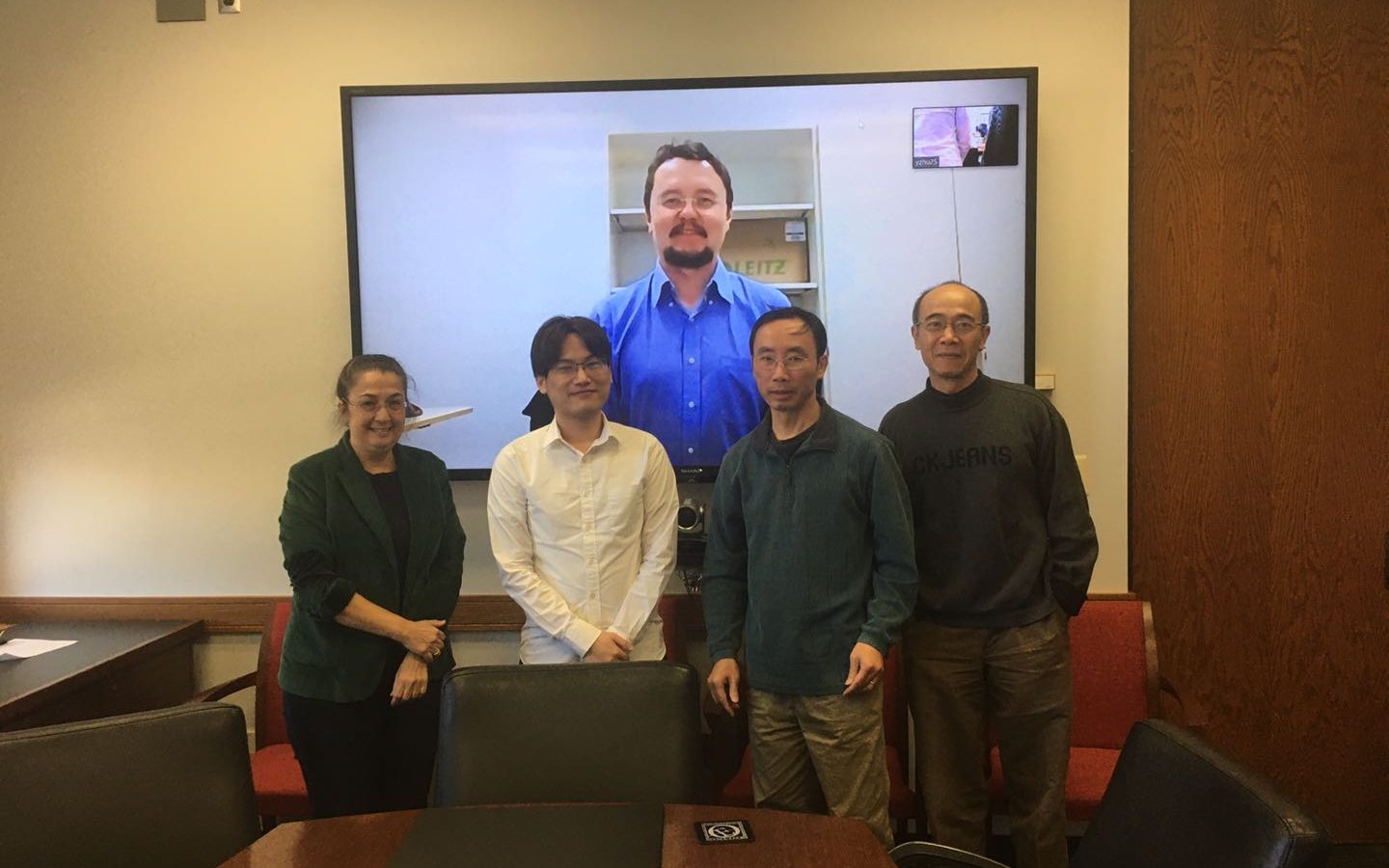On December 19, Yangmo Zhu successfully defended his PhD dissertation, Development and Assessment of a Data-driven approach for Turbulence Modeling. Yangmo’s committee consisted of his advisor, Nam Dinh, and members, Maria Avramova, Igor Bolotnov, and Hong Luo.
ZHU, YANGMO. Development and Assessment of a Data-driven approach for Turbulence Modeling. (Under the direction of Dr. Nam Dinh)
The goal of this work is to develop and assess a data-driven approach for turbulence modeling (DDTM) approach that could be leveraged in engineering analysis including simulation of thermal-hydraulic processes in nuclear power plants (NPP). Traditionally, the most common method in computational fluid dynamics (CFD) used in engineering practice is based on the solution of Reynolds-averaged Navier–Stokes (RANS) equations. The method has limitations in the calculation accuracy and complexity of choosing turbulence models and parameters for different flow configurations. High fidelity (HF) simulations, such as the Direct numerical simulation (DNS) and the Large eddy simulation (LES), could break the two limitations of RANS but their computational expenses are too large to be used in engineering practice. The DDTM approach aims to develop a RANS-based method which is as accurate as HF simulations and applicable to a broad range of flow patterns leveraging the power of machine learning. The potential advantages of DDTM are in three aspects: The first advantage is to let data automatically improves the model. Labor cost and human biases in devising the mathematical expressions are reduced; The second advantage is the potential to integrate the various types of turbulence models into one model, which could greatly simplify the CFD simulation process and system code coupling; The third advantage is the potential to largely reduce computational expense by applying the framework of DDTM into coarse mesh simulation, where the DDTM approach not only simulate the turbulence error but also the error caused by using coarse mesh.
The main contribution of this work is the proposal of a new DDTM approach. The new approach is named as “multi-model data-driven turbulence modeling (MDTM)”, compared to the “single-model data-driven turbulence modeling (SDTM)” approach proposed by other researchers. The term “model” here refers to the turbulence models in RANS. The SDTM approach is so far considered as the most suitable DDTM approach for our purpose. But it has two limitations that prevent it from being a practical approach: First, the single-model approach fails when the baseline model result is far from the true result; Second, the selection of baseline turbulence model form and parameters could make a difference in prediction accuracy. But one could not quantitatively determine which baseline model is the most suitable one for a certain flow configuration beforehand. Hence the MDTM approach is proposed to overcome these limitations by increasing the degree of freedom to the machine learning surrogate model and let the machine learning surrogate model automatically select the most suitable baseline model to be used.
Numerical experiments have been performed to test the performance of MDTM approaches. 5 case studies are performed to answer 5 critical questions about DDTM separately. The 1st question is whether the SDTM approach performs better than the traditional turbulence model approach; The 2nd question is whether the MDTM approach performs better than the SDTM approach; The 3rd question is whether the MDTM approach could be applied to more complex flow configurations. The question is divided into two parts, the first part increases the complexity of the flow by studying transient flows instead of quasi-steady-state flows, the second part increases the complexity of the flow by applying it to a 3D channel flow with more complex geometry; The 4th question is whether the HF data could use RANS instead of DNS or LES, so to save computational expense in preparing CFD data for the ML approach. The last question is whether the LF model could use coarse mesh RANS instead of RANS applied on a regular mesh, so as to save computational expense in the prediction process of the ML approach.

